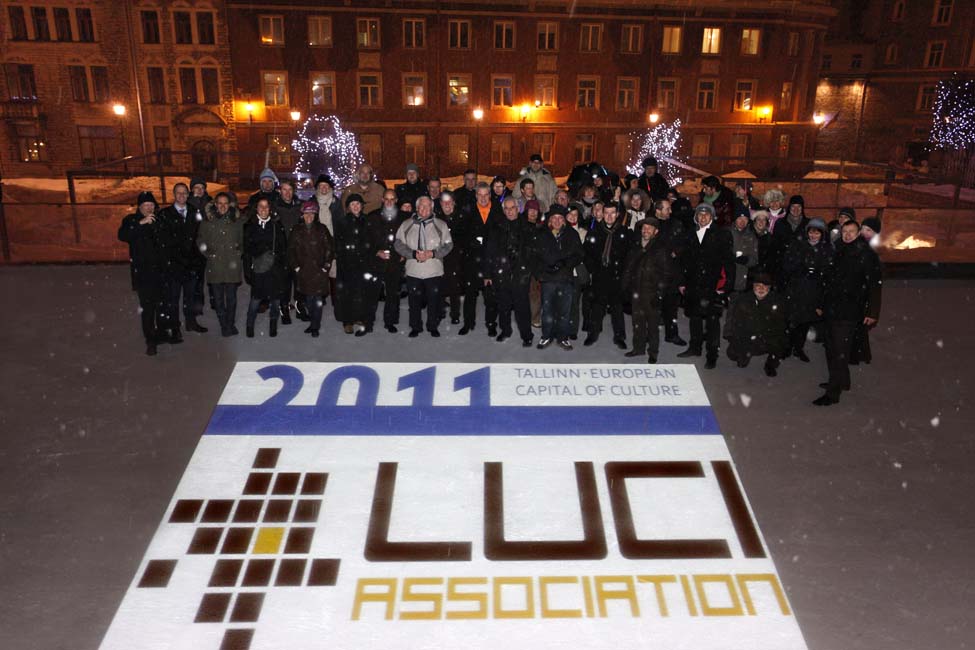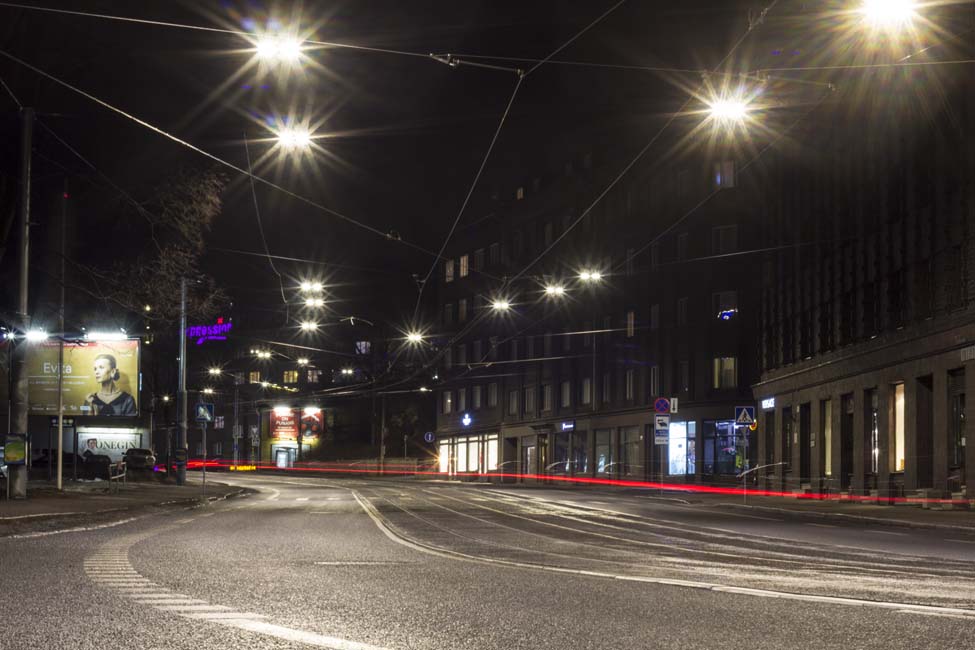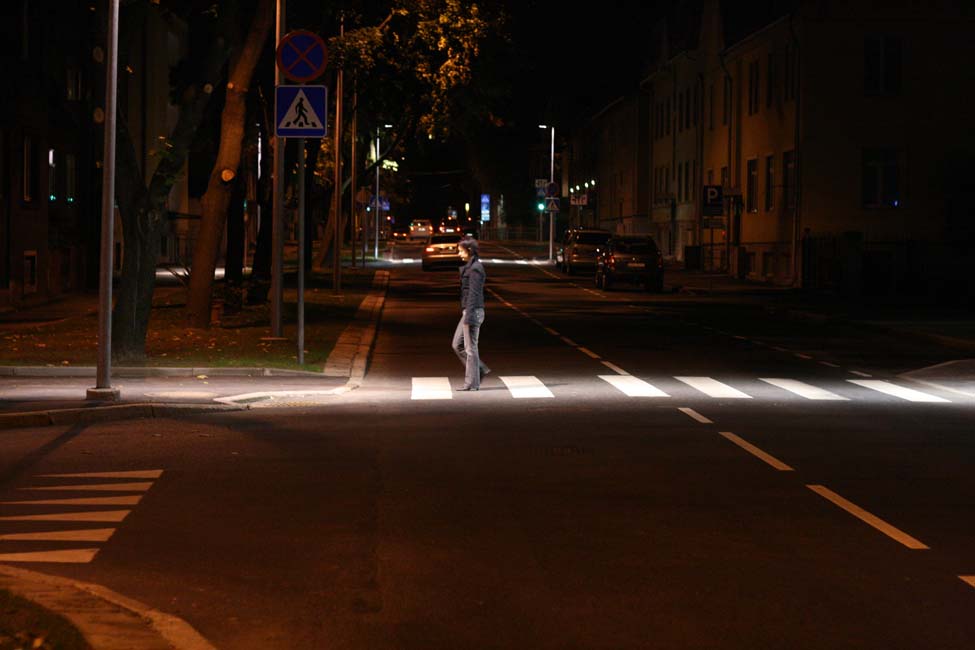Back on site: Tallinn
After the LUCI City under Microscope Tallinn in 2011, Cities & Lighting went back to the Estonian capital to take a look at the new developments in its urban lighting policy…

Over 100 representatives from LUCI cities around the world visited a snowy Tallinn for the LUCI City under Microscope in February 2011. Participants discovered the urban lighting network and lighting strategy of this city of 438 000 inhabitants renowned for its medieval city centre. The focus of Tallinn’s lighting strategy was on increasing energy efficiency and the event was an opportunity to discuss various approaches, ranging from switching off street lights to the implementation of LED lighting.
LED technology in street lighting was in the early stages of development at the time, so participants were especially interested in the results of Tallinn’s LED test project presented during the event. The project brought together the municipality, the Tallinn University of Technology and other stakeholders in a collaborative testing process in which LED lamps from various manufacturers were installed on a city street and tested on-site. “According to the results of the test street in 2011, it seemed then that the durability and the effectiveness of LED technology could not compete with high pressure sodium lamps,” says Tarmo Sulg, Deputy Head of the Tallinn Municipal Engineering Services Department.
LED revolution
The past five years however, have seen a major shift in the city’s point of view on LEDs in street lighting. “Due to the rapid development of LED technology, we have had to completely reconsider our city lighting concept,” declares T. Sulg. All new street lighting projects in the city now use LED and it is expected that there will be over 1 500 LED lamps in Tallinn by the end of 2015.

One of the reasons for this is the positive impact of the LED test street project. As T. Sulg explains, “In 2011 there were too many errors and miscalculations in LED product data from manufacturers, so procuring LEDs was very difficult.” The LED test street enabled Tallinn to work together with manufacturers, importers and experts and find solutions to the barriers for large-scale implementation of LED street lighting. These barriers included issues such as inconsistent measurements, incompatible standards and specification clarifications. The municipality now regularly collaborates with the Tallinn University of Technology which has become the primary reference on LED procurement in the country.
Another factor that favoured Tallinn’s shift to LED was the feedback and experiences from other cities. “Collaboration in LUCI and the INTERREG IVC PLUS project (2010-2012) also helped us to develop our LED lighting solutions and learn from best practices of other cities. It has been invaluable to Tallinn,” affirms
T. Sulg. “For example, we were inspired by the experience of the City of Leipzig retrofitting their historical city centre lamps with LED.” This led Tallinn to retrofit 590 historic lamps in the Old Town with LED, resulting in a 68 % decrease in energy consumption and an improvement in the quality of lighting.
New projects and a new contract
Encouraging sustainable mobility and improving road safety at pedestrian and cycle crossings, which was a priority in 2011, remains so today. During the City under Microscope, Tallinn had demonstrated a pilot project for special lighting on street crossings that helped drivers notice pedestrians or cyclists as early as possible and safely stop the vehicle. The number of specially lit pedestrian crossings in Tallinn has risen from 71 in 2011 to 527 in 2015, with 30 to 40 new crossings installed each year. The city’s long-term goal is to install LED lights at these crossings combined with presence detection in the future.

Tallinn has also launched intelligent lighting pilots in recent years. It plans to deploy a lamp based operation system that will allow the city to individually control each lighting point. “We will soon have a completely new street in the city that uses this lamp-based operation system, which is the top-class of operation systems,” says T. Sulg. The municipality was also implementing a street light dimming pilot project in Kalaranna street and preparations are underway on Suur- Sõjamäe street for a test project to regulate lighting levels with motion detectors.
An important evolution in Tallinn regards the management of the public lighting system itself. In 2014, a new public tender was opened when the 10-year contract with the company responsible for implementing and maintaining the city’s urban lighting network came to an end. This call for tender was preceded by a thorough analysis of Tallinn’s requirements and expectations which has ensured maximum clarity in contract conditions. With the newly selected service provider, the city has implemented a state-of-the-art lighting control and monitoring system, and, at the end of the contract, has the option to acquire the ownership of the lighting network control system. It has also secured a 50 % decrease in maintenance costs. “We are very pleased that this decrease in maintenance expenses has meant the end of a cost-saving measure which saw one in six street lights turned off throughout the city,” explains T. Sulg.
Perspectives for the future
New goals for the development of public lighting in Tallinn have been established for 2015-2020. These include the development of a lighting plan for the city centre and its Old Town. “We want the lighting plan to establish the main design principles for the area and contribute to our primary goal of creating conditions forthe development of a high-quality, innovative, balanced and safe public cityscape with outdoor lighting,” explains T. Sulg. Developing new architectural lighting to highlight the structure of the main buildings and public spaces of the Old Town, including the Town Hall Square, is a priority.
An edited version of this article originally appeared in Cities & Lighting magazine (Issue #2 , 2015).

Images (c) City of Tallinn

